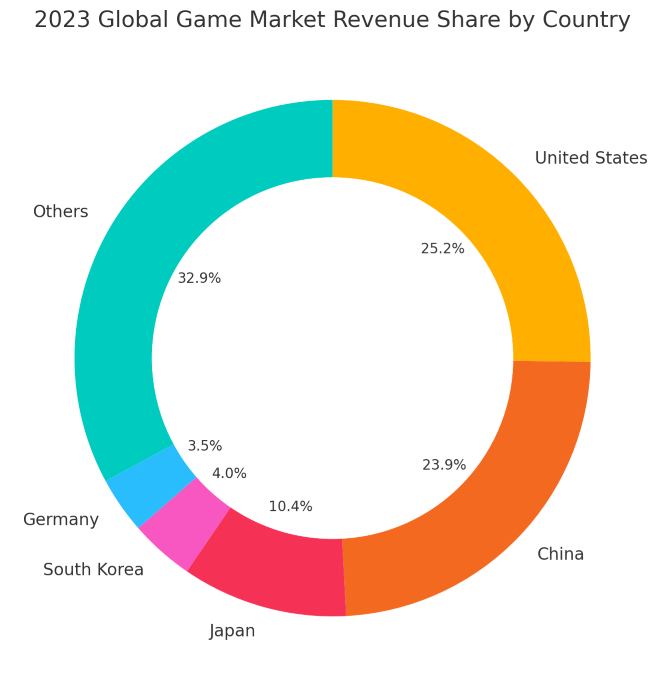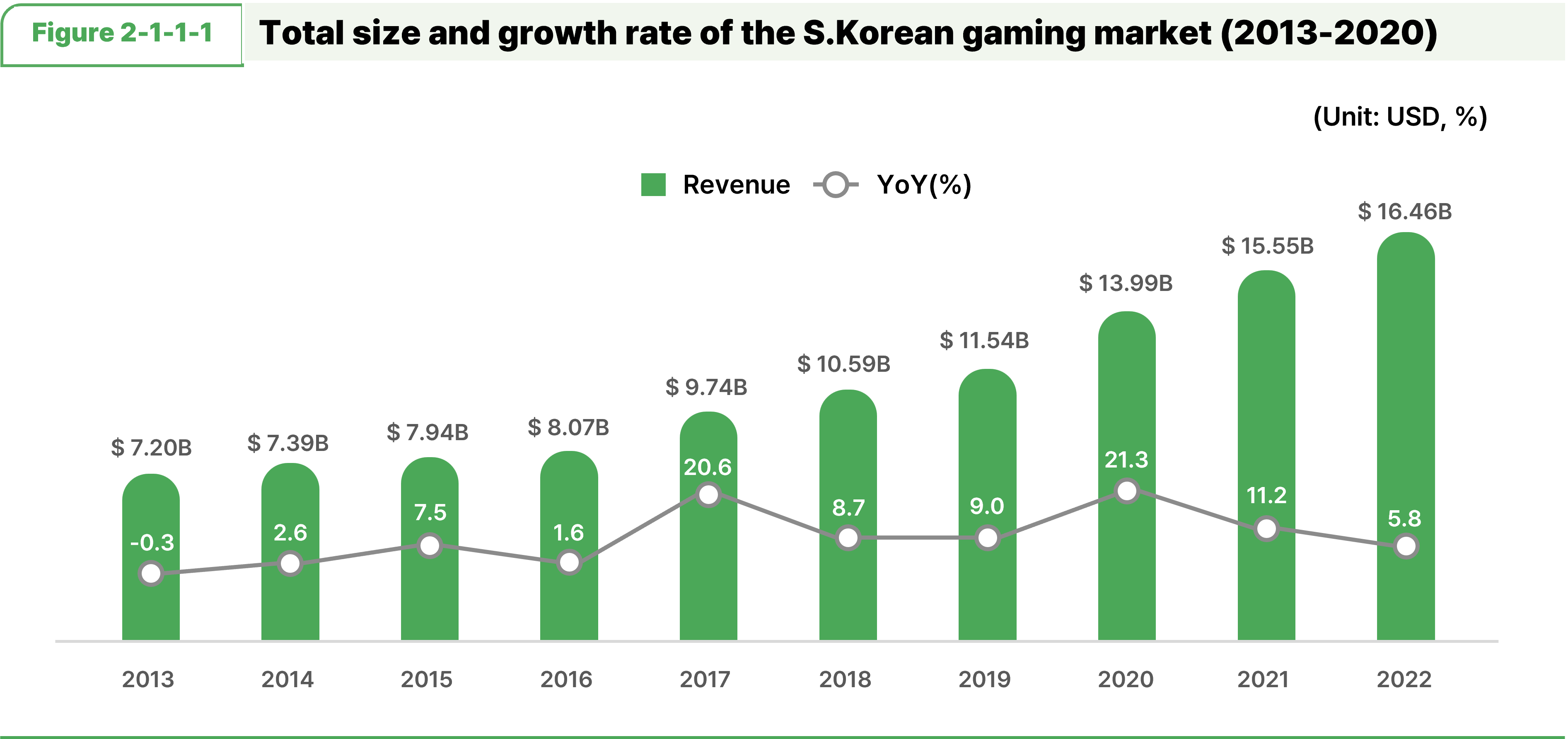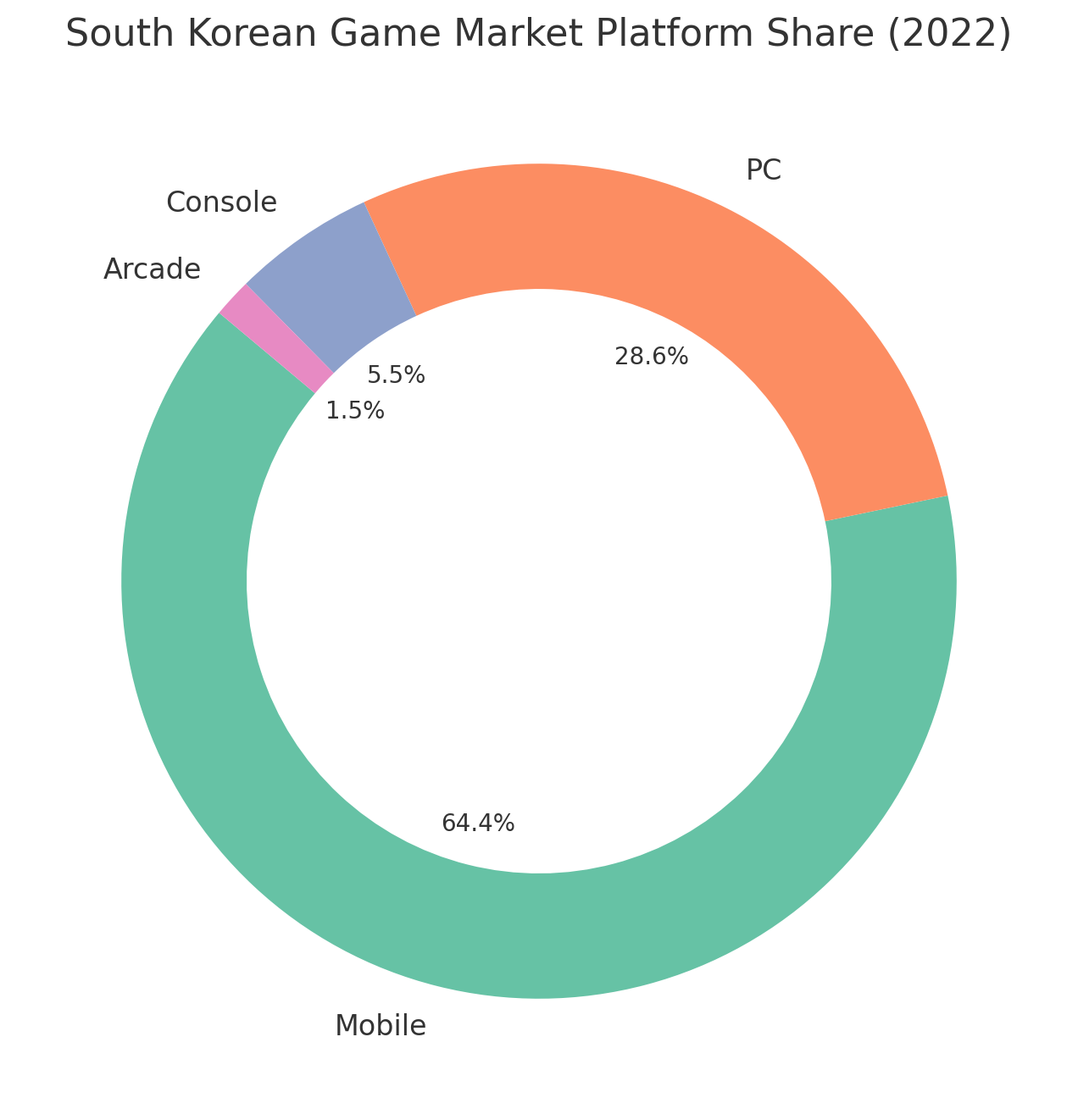A Guide to Entering the South Korean Game Market for Global Developers [Series 1] - Key Features of the Korean Game Market
![A Guide to Entering the South Korean Game Market for Global Developers [Series 1] - Key Features of the Korean Game Market](/content/images/size/w1200/2025/02/2023-Global-Game-Market-Revenue-Share1.png)
Written by Finance Person jhin, 05 November 2024
If you're a game developer, you might have heard a bit about the South Korean game market. Perhaps K-pop, Korean dramas, or Korea's robust eSports scene sparked your interest.
No matter what brought you here, the fact that you're reading this guide means you're taking the first step toward entering the South Korean game market. So, what does the South Korean gaming market really look like, and what kind of opportunities are there for your game to thrive here?
In this article, we'll explore the South Korean game market (hereafter called "Korea") and examine its unique characteristics and opportunities.
The Korean Game Market: A Landscape of Challenges and Opportunities
A powerhouse in setting global trends, the Korean gaming market ranks 4th in global market share. Korean gamers are active across multiple platforms, including mobile, PC and console. Korea has established itself as a global leader in e-sports, with games such as League of Legends and PUBG: Battlegrounds topping the list.

Korean gamers demand exceptional quality in the games they play, and are known to be some of the most demanding consumers in the world. If your game can win the hearts of Korean gamers, it's likely to be competitive on a global scale.
Preview: What Opportunities Await in the Korean Game Market?
Korea boasts a vibrant gaming culture across a variety of platforms, including mobile, PC, and e-sports. With over 70% of the population actively playing games, it is also one of the top countries in terms of game consumption. This high level of engagement provides a strong base of demand for those looking to enter the market.
Notably, Korea is recognized as an extremely lucrative mobile gaming market. Korean consumers expect high quality games, and the country has a well-developed mobile payment system that supports in-app purchases and subscription models. This makes Korea a promising market for mobile games in particular. On Google Play, Korean gamers are the second highest spenders of all countries*.
By taking advantage of these market characteristics, a Korean market entry can be a solid path to profitability.
*Source: The Spending Habits of Korean Mobile Gamers: IAP Trends Shaping 2024, cited.
Every Rose Has Its Thorns: Challenges in the Korean Game Market
The Korean gaming market is full of attractive opportunities, but it also presents a unique set of challenges. Korean gamers expect a high level of quality, and competition is stiff as many developers aim to capture this lucrative market. That's why thorough preparation becomes vital.
To be successful in the Korean market, what should you prepare for? In this series, we're going to dive into three core topics: Analysis of Korean gamers, Legal and regulatory aspects of the Korean games industry, and Latest trends in the Korean games market, followed by a case study. Before getting into specifics, let's explore some essential background for understanding the Korean market.
Market Analysis: The First Step to Success
Developing a game starts with a creative idea, but a thorough market analysis is essential to ensure commercial success.
The passion for the creation of a great game idea and its realization is a fundamental quality that every game developer should have.
However, if your goal is commercial success, the creation of a game that you personally love may not be enough.
Consider the following example: Let us say you decide to release a console game on Steam that is targeted at the Korean market. You've created "a truck driving simulation game" that's popular in your home country, and because it did well there, you might expect similar success in Korea.
However, the Korean market has its own unique characteristics. Console games account for only 5% of the market. Mobile and PC games dominate, accounting for about 93% of the market. In addition, RPGs are particularly popular on both mobile and PC platforms. In light of these preferences, your simulation game may have a hard time gaining popularity in Korea.
It's important to understand what kinds of games Korean consumers are actually interested in before you ask, "Why isn't this game selling well enough?" after it launches.
Therefore, identifying consumer needs before developing your game is important. Think of it like a chef: Instead of making a dish based solely on personal taste, the chef considers what the customers will enjoy. In the same way, designing a game based on what the audience wants is essential to succeed.
Understanding Consumer Preferences: Analyzing the Korean Game Market
Let's start with an overview of the current landscape before diving into the details of the Korean gaming market.
Global Market Share of the Korean Game Industry (2023)
In 2023, Korea had a 4.0% share of the global games market. This makes it the fourth largest games market in the world.
(Although this figure may seem relatively small compared to the top markets, when you consider that Korea's share of the global population is only 0.64%, then this significant discrepancy highlights Korea's advanced game industry and its high level of consumer engagement. 😏)

Market Size and Growth of the Korean Game Industry (2013–2022)
By 2022, the Korean gaming market is expected to reach approximately USD 16.46 billion, growing 5.8% compared to the previous year. With a 5.8% increase in 2022 alone, the Korean game market has shown consistent growth over the past decade.
However, in 2023, it is estimated to start shrinking by 11%. This decline is attributed to the post-pandemic adjustment of the market, following the strong growth seen in 2022 due to the endemic impact of COVID-19.

Distribution of the Korean Game Market by Platform
In 2022, mobile games held the largest share of the Korean market, around USD 10.15 billion (64.4%). PC games followed at approximately USD 4.3 billion (28.6%).
Together, these two platforms dominate the market. They account for approximately 93% of the total market size. Console games and arcade games account for smaller shares of the market at 5.5% and 1.5%, respectively.

Korea is ranked 3rd in the world for PC games (12.7 percent) and mobile games (11.4 percent), while console games (1.5 percent) and arcade games (1.3 percent) are ranked 9th and 10th, respectively.
Korean Game Market Imports by Country and Game Genre
As of 2022, the main sources of imported games in the Korean market were China (43.1%), North America (42.2%), and Japan (6.8%).
Lets have a closer look at the most popular game genres imported from each of these regions:
(1) China
- Genres: Mobile RPGs and MMORPGs are particularly popular, with action RPGs like Genshin Impact gaining considerable popularity.
- Characteristics: Many games from China are free-to-play and rely on in-app purchases for revenue, making them highly compatible with the Korean market.
(2) North America
- Genres: FPS (First-Person Shooter) and Action-adventure games dominate imports, with popular titles like Call of Duty.
- Characteristics: Known for high production values, North American AAA games are well-received in Korea, attracting players with their quality and immersive experiences.
(3) Japan
- Genres: JRPGs, visual novels, and mobile games, with popular franchises like Final Fantasy and Monster Hunter leading the way.
- Characteristics: Japanese games are known for their unique storytelling and character design, earning a loyal fan base in Korea.
Global Comparison of Key Game Markets
The strong emphasis on mobile games in the Korean game market is in line with the global trend. Japan, which ranks just below Korea as the world's third largest gaming market, has begun to decline, narrowing the gap with Korea. Meanwhile, the global market continues to be dominated by the US and China.
Interestingly, Korea's console gaming sector is also on the rise - a welcome sign that demand for consoles is on the rise and a sign that new opportunities are emerging beyond the traditional mobile and PC gaming sectors.
Furthermore, the Chinese-speaking countries continue to grow and share similar market characteristics with Korea. For some game publishers, entering the Korean market is a strategic bridgehead for continued expansion into the Chinese market.
*Source: 2023 Korea Game White Paper, statistical data cited
In Conclusion
In this article, we explored the current landscape and key characteristics of the Korean game market. Let’s recap the main takeaways:
Snapshot: Key Features and Insights on the Korean Game Market
Korean gamers are known for their high expectations of game quality. They have a strong preference for mobile and PC platforms. As of 2022, mobile games accounted for 64.4% of the market and PC games for 28.6%. This means that about 93% of the market is concentrated on these two platforms. Popular genres include RPG, MMORPG, FPS and action-adventure games. Games from China - mobile RPGs and MMORPGs - are particularly well received.
Korea also has a dedicated fan base for high-quality AAA titles from North America and unique JRPGs and visual novels from Japan. In particular, Korea ranks second in the world for in-app purchase spending on Google Play, and the mobile market has a high spending rate. Significant profitability can be achieved by leveraging these characteristics.
Due to its high game consumption rate, Korea's gaming market is the fourth largest in the world and offers stable demand. However, it is also a highly competitive market with a demanding consumer base. Success in Korea requires careful localization and preparation. In order to stand out, quality content and effective monetization models tailored to each platform, especially mobile and PC, are essential.
To be continued…
The "A Guide to Entering the South Korean Game Market for Global Developers" series is designed to help you navigate the Korean market successfully. Topics such as analyzing Korean gamers, understanding game industry regulations, and exploring the latest trends will be covered in upcoming articles.
Stay tuned for more insights! 📻

© 2024 AFI, INC. All Rights Reserved. All Pictures cannot be copied without permission.

![[External Essay] Gamescom 2025 Interactions](/content/images/size/w600/2025/09/------1.png)


